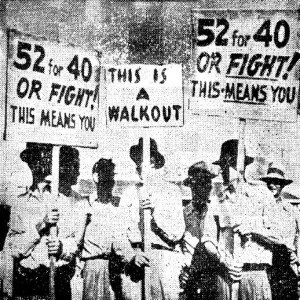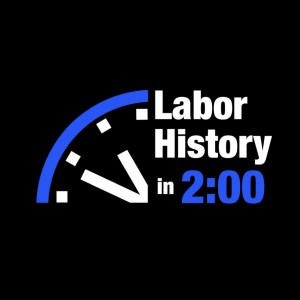
- Podcast Features
-
Monetization
-
Ads Marketplace
Join Ads Marketplace to earn through podcast sponsorships.
-
PodAds
Manage your ads with dynamic ad insertion capability.
-
Apple Podcasts Subscriptions Integration
Monetize with Apple Podcasts Subscriptions via Podbean.
-
Live Streaming
Earn rewards and recurring income from Fan Club membership.
-
Ads Marketplace
- Podbean App
-
Help and Support
-
Help Center
Get the answers and support you need.
-
Podbean Academy
Resources and guides to launch, grow, and monetize podcast.
-
Podbean Blog
Stay updated with the latest podcasting tips and trends.
-
What’s New
Check out our newest and recently released features!
-
Podcasting Smarter
Podcast interviews, best practices, and helpful tips.
-
Help Center
-
Popular Topics
-
How to Start a Podcast
The step-by-step guide to start your own podcast.
-
How to Start a Live Podcast
Create the best live podcast and engage your audience.
-
How to Monetize a Podcast
Tips on making the decision to monetize your podcast.
-
How to Promote Your Podcast
The best ways to get more eyes and ears on your podcast.
-
Podcast Advertising 101
Everything you need to know about podcast advertising.
-
Mobile Podcast Recording Guide
The ultimate guide to recording a podcast on your phone.
-
How to Use Group Recording
Steps to set up and use group recording in the Podbean app.
-
How to Start a Podcast
-
Podcasting
- Podcast Features
-
Monetization
-
Ads Marketplace
Join Ads Marketplace to earn through podcast sponsorships.
-
PodAds
Manage your ads with dynamic ad insertion capability.
-
Apple Podcasts Subscriptions Integration
Monetize with Apple Podcasts Subscriptions via Podbean.
-
Live Streaming
Earn rewards and recurring income from Fan Club membership.
-
Ads Marketplace
- Podbean App
- Advertisers
- Enterprise
- Pricing
-
Resources
-
Help and Support
-
Help Center
Get the answers and support you need.
-
Podbean Academy
Resources and guides to launch, grow, and monetize podcast.
-
Podbean Blog
Stay updated with the latest podcasting tips and trends.
-
What’s New
Check out our newest and recently released features!
-
Podcasting Smarter
Podcast interviews, best practices, and helpful tips.
-
Help Center
-
Popular Topics
-
How to Start a Podcast
The step-by-step guide to start your own podcast.
-
How to Start a Live Podcast
Create the best live podcast and engage your audience.
-
How to Monetize a Podcast
Tips on making the decision to monetize your podcast.
-
How to Promote Your Podcast
The best ways to get more eyes and ears on your podcast.
-
Podcast Advertising 101
Everything you need to know about podcast advertising.
-
Mobile Podcast Recording Guide
The ultimate guide to recording a podcast on your phone.
-
How to Use Group Recording
Steps to set up and use group recording in the Podbean app.
-
How to Start a Podcast
-
Help and Support
- Discover

On this day in labor history, the year was 1945.
That was the day oil workers walked off the job.
The strike soon spread to 20 states and involved more than 43,000 workers at 22 oil companies.
After years of wartime wage freezes, the union’s demand was 52 for 40—fifty-two hours pay for 40 hours work.
Workers demanded a 30% pay increase, shift differentials and an eventual return to the 36-hour workweek.
The strike began in Michigan at the Socony-Vacuum refinery in Trenton.
From there it spread to Gulf, Sinclair and Shell.
By October 4, President Truman signed executive order 9639, allowing the Secretary of the Navy to seize petroleum operations.
The Oil Workers International Union/CIO immediately called off the strike and ordered its members back to work.
A month later, the Navy had still not relinquished control of operations.
The union considered Truman’s seizure a betrayal.
There was no mechanism put in place to settle the dispute or consider workers demands.
By January 1946, the Oil Panel, created by the Secretary of Labor, finally awarded oil workers an 18% wage increase.
Though disappointed, the union considered it a victory.
They asserted the strike action was significant on a number of levels.
The first nationwide industry strike had just forced the oil companies to meet with the union for the first time.
The OWI believed the groundwork for industry-wide bargaining had finally been established.
It had been the first post-war strike and had forced the government to begin moving away from wartime wage controls.
Of the post-war strikes, it won the largest pay increase.
And importantly, it broke the power of Standard Oil to dictate wages to the industry through its dealings with its “independent union.”
More Episodes
 2025-05-02
2025-05-02
 2025-05-01
2025-05-01
 2025-04-29
2025-04-29
 2025-04-28
2025-04-28
 2025-04-27
2025-04-27
 2025-04-25
2025-04-25
 2025-04-24
2025-04-24
 2025-04-23
2025-04-23
 2025-04-22
2025-04-22
 2025-04-21
2025-04-21
 2025-04-20
2025-04-20
 2025-04-19
2025-04-19
 2025-04-17
2025-04-17
 2025-04-16
2025-04-16
 2025-04-14
2025-04-14
Create your
podcast in
minutes
- Full-featured podcast site
- Unlimited storage and bandwidth
- Comprehensive podcast stats
- Distribute to Apple Podcasts, Spotify, and more
- Make money with your podcast
It is Free
- Privacy Policy
- Cookie Policy
- Terms of Use
- Consent Preferences
- Copyright © 2015-2025 Podbean.com


